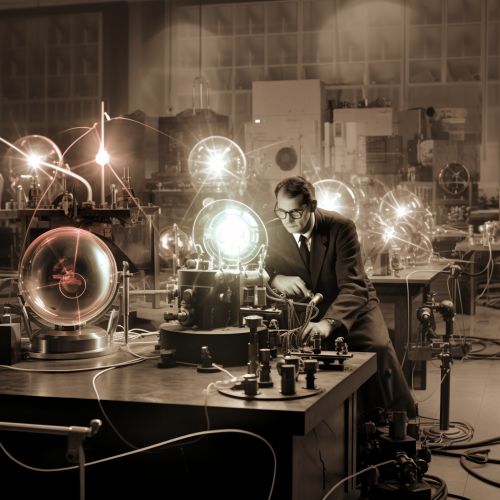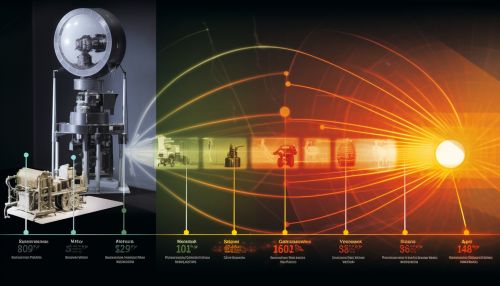Photonics
Introduction
Photonics is the physical science of light (photon) generation, detection, and manipulation through emission, transmission, modulation, signal processing, switching, amplification, and sensing. Though covering all light's technical applications over the whole spectrum, most photonic applications are in the range of visible and near-infrared light. The term photonics developed as an outgrowth of the first practical semiconductor light emitters invented in the early 1960s and optical fibers developed in the 1970s.
History of Photonics
The science of photonics includes the emission, transmission, amplification, detection, and modulation of light. The term photonics originated in the 1960s with the invention of the laser and the optical fiber. These technologies revolutionized many areas of science and engineering, including telecommunications, medicine, and computing.


Fundamental Concepts
Photonics is closely related to quantum optics, optomechanics, electro-optics and optoelectronics, but differs in that it focuses on the properties and applications of photons. Photons are distinct from other particles in their inherent properties such as having no mass and always moving at the speed of light in a vacuum.
Photons
Photons, the basic unit of light, are unique particles that exhibit both wave-like and particle-like properties. This dual nature is described by the wave–particle duality principle in quantum mechanics. Photons are always in motion and, in a vacuum, travel at a constant speed to all observers, regardless of the motion of the light source.
Light
Light is electromagnetic radiation within a certain portion of the electromagnetic spectrum. The word usually refers to visible light, which is the portion of the spectrum that is visible to the human eye. However, in the context of photonics, light can also refer to invisible forms of radiation such as ultraviolet, infrared, and radio waves.
Applications of Photonics
Photonics has a wide range of applications across various fields, including communications, information processing, lighting, metrology, spectroscopy, holography, medicine, military technology, agriculture, and robotics.
Communications
In communications, photonics is used in telecommunications and is gradually replacing traditional electronic devices as it can transmit more data over long distances. The backbone of the internet is built on photonic systems, including optical fibers, lasers, and photodetectors.
Information Processing
In information processing, photonics is used in the development of faster and more energy-efficient computing technologies. This includes the development of optical computers, which use light instead of electricity to perform computations.
Lighting
In lighting, photonics is used to develop more efficient and environmentally friendly lighting technologies. This includes the development of LEDs and OLEDs, which are more energy-efficient than traditional incandescent and fluorescent lights.
Future of Photonics
The future of photonics is promising, with many potential applications in various fields. For example, in healthcare, photonics can be used to develop non-invasive diagnostic tools, such as optical coherence tomography, which can produce high-resolution images of the body's internal structures. In agriculture, photonics can be used to develop more efficient and sustainable farming practices, such as precision farming, which uses sensors and imaging technologies to monitor and optimize crop growth.


